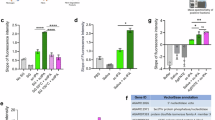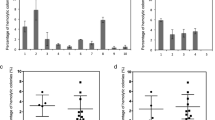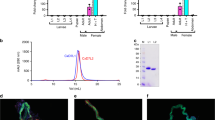Abstract
IT was generally accepted that vampire bats were bloodsucking animals until 1932 when Dunn1 observed that these animals use their tongues to lap blood from freely bleeding wounds inflicted by means of razor-sharp superior incisors. This observation was confirmed by Ditmars and Greenhall2 and by many subsequent investigators, and it has been noticed that bites inflicted by vampire bats not only bleed very freely when the wound is first made, but also continue to bleed for several hours after the bat has ceased to feed3. It is therefore of interest to investigate the mechanism by which vampire bat saliva brings about this degree of interference with the haemostatic mechanism of the host animal.
This is a preview of subscription content, access via your institution
Access options
Subscribe to this journal
Receive 51 print issues and online access
$199.00 per year
only $3.90 per issue
Buy this article
- Purchase on SpringerLink
- Instant access to full article PDF
Prices may be subject to local taxes which are calculated during checkout
Similar content being viewed by others
References
Dunn, L. H., J. Preventive Med., 6, 415 (1932).
Ditmars, R. L., and Greenhall, A. M., Zoologica, 19, 53 (1933).
Mann, F. G., Biologica, 12, 3 (1951).
Romana, C., Soc. Path. Exot., 32, 399 (1939).
Bier, O. B., C.R. Soc. Biol., 110, 129 (1932).
DiSanto, P. E., J. Morphol., 106, 301 (1960).
Astrup, T., and Mullertz, S., Arch. Biochem., 40, 346 (1952).
Lassen, M., Acta Physiol., 27, 321 (1952).
Author information
Authors and Affiliations
Rights and permissions
About this article
Cite this article
HAWKEY, C. Plasminogen Activator in Saliva of the Vampire Bat Desmodus rotundus. Nature 211, 434–435 (1966). https://doi.org/10.1038/211434c0
Issue Date:
DOI: https://doi.org/10.1038/211434c0
This article is cited by
-
Behavioral variation according to feeding organ diversification in glossiphoniid leeches (Phylum: Annelida)
Scientific Reports (2021)
-
Keeping the blood flowing—plasminogen activator genes and feeding behavior in vampire bats
Naturwissenschaften (2009)



